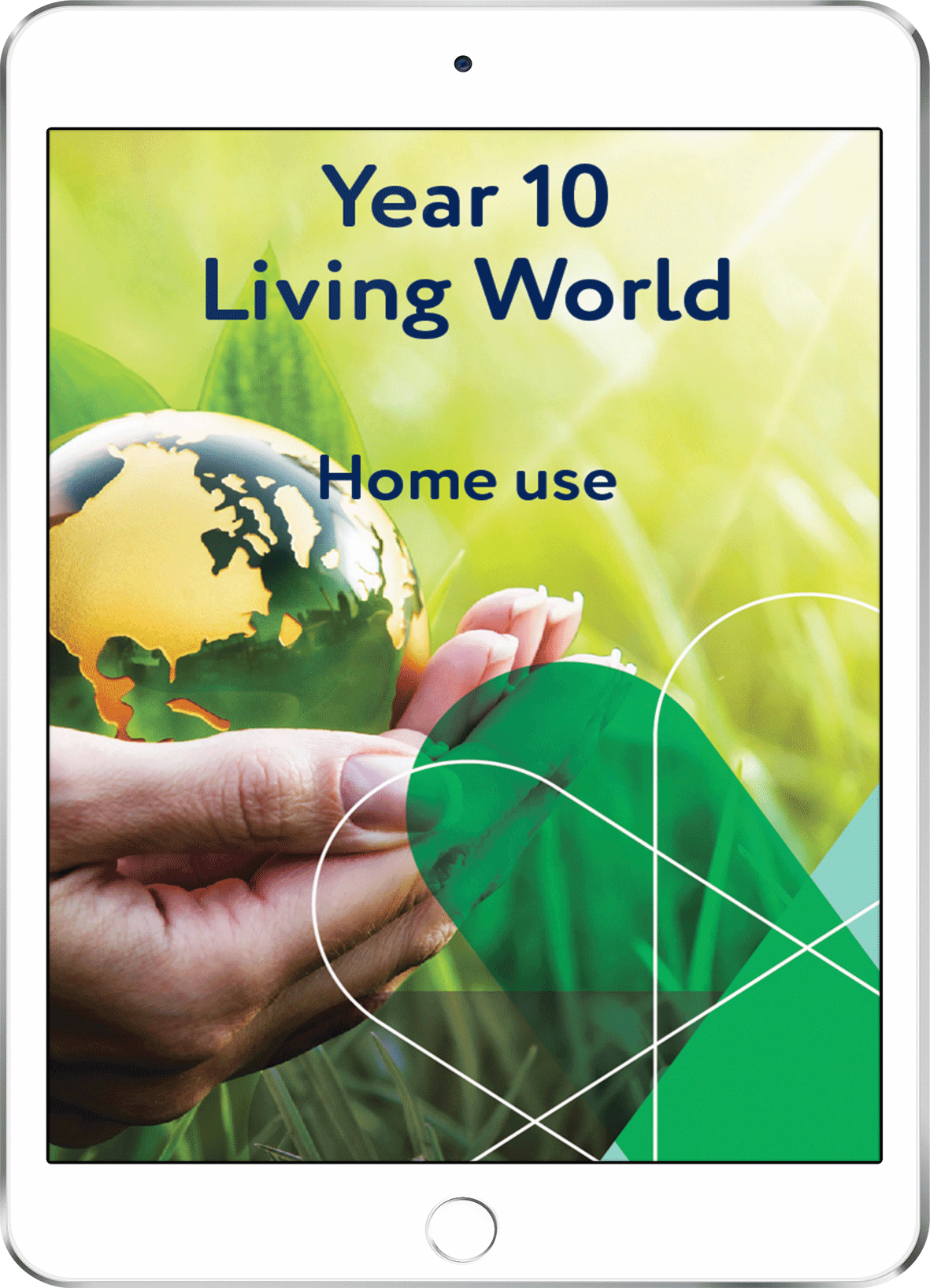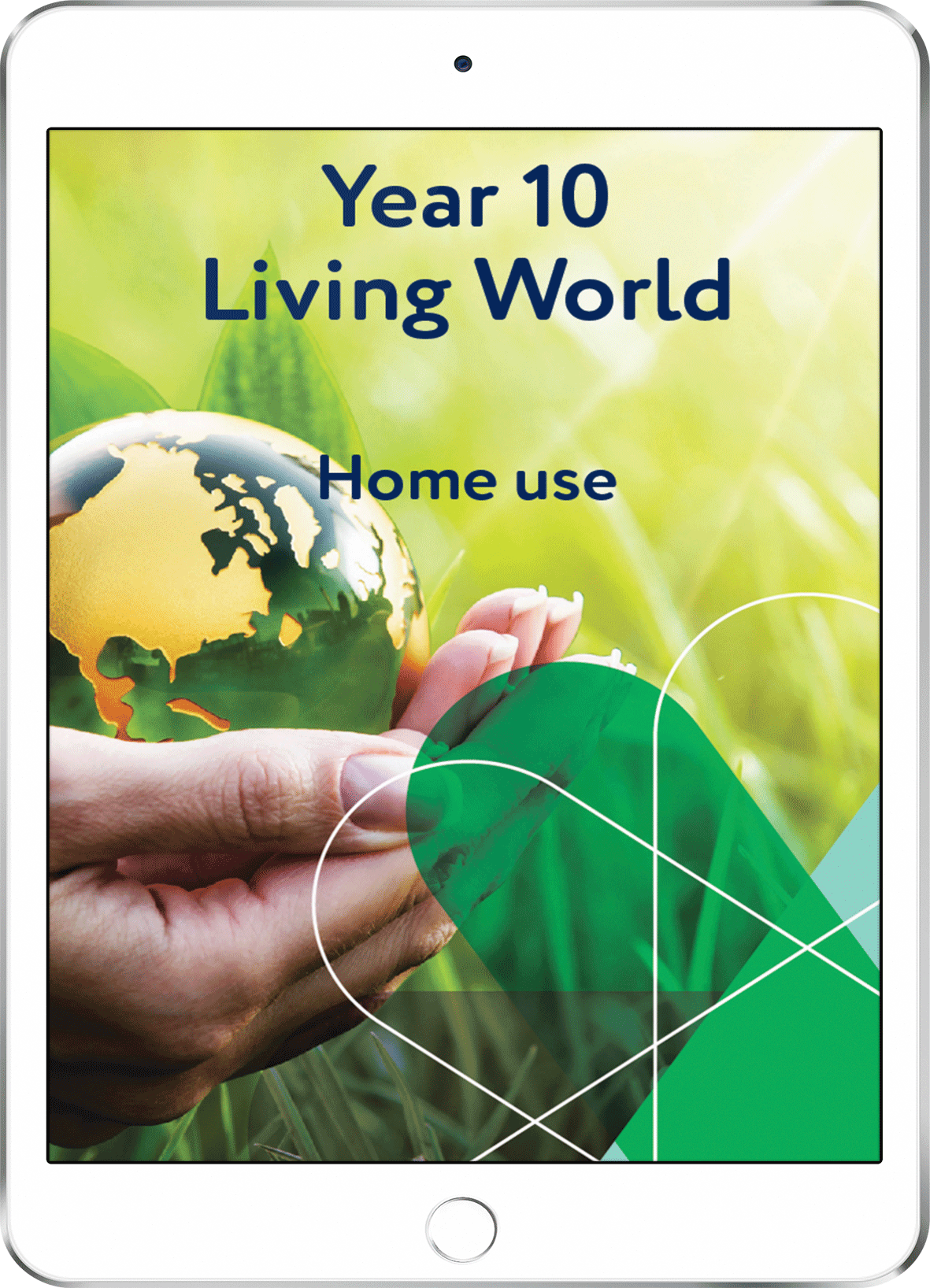Year 10 Living World - Home Use
Year 10 Living World - Home Use
LearnWell Digital
This version of the resource is for home use. Students work independently through the resource. If you are a teacher, you should purchase the school use version.
Couldn't load pickup availability
In this Year 10 Living World course you'll work through four sections:
- Inheritance and evolution‚ you were introduced to some of the basic concepts in relation to evolution and natural selection in Year 9. In this Year 10 course we'll be looking at the inheritance of genetic information through reproduction and how this contributes to adaptation and natural selection.
- Life processes in animals‚ we'll look at the structural features and functions involved in the seven life processes you learned about in Year 9: movement, respiration, sensitivity, growth, reproduction, excretion and nutrition.
- Ecology, communities and ecosystems‚ in Year 9 you learned about some of the things that affect where organisms live and what helps living organisms survive in ecosystems. Now in Year 10 we'll build on these ideas to explore feeding relationships and nutrient cycles.
-
Human impacts‚ we'll look at biodiversity the variety and variability of life on Earth as well as what we (as humans) are doing about carbon.
This course will build on the concepts, knowledge and skills you learned last year in Year 9, rounding out your understanding of the living world. It will also prepare you for looking at these kinds of topics in greater depth in Years 11-13, when these living world studies are called‚ biology.
You might recall from last year that the word 'biology' comes from two Greek words: 'bios' meaning 'life' and 'logos' meaning 'study'. So biology is the study of life and living organisms.
How you'll learn
People learn in different ways. Here are some of the ways you can learn and interact with the materials in this online course.
Self-paced learning‚ This online course is set up so you can learn at your own pace. So, although there are 'suggested' times for each page, they're just a guideline. Plan your learning to suit you.
Diagrams, videos and interactions‚ Some people prefer to learn by reading, some by watching and listening, and some by doing. We've used diagrams, videos and interactions alongside the text, so that there's something for everyone!
Practice activities‚ Throughout this course there are lots of short activities. These activities are for you to check your own understanding, not for someone to mark them. These activities give you a great chance to practise what you've learned and compare your answer with the model feedback without being assessed.‚
Glossary‚ We'll be using some technical words and phrases in this course. To help you grow your vocab around the topics, the course includes an online glossary. When you see a word or phrase underlined in the text, move your cursor over it and a definition will pop up easy as!
Discussions‚ Sharing with others can also be a great way to learn. Talk with your classmates and teacher at school about the ideas you come across in this online course. Even chat to your family at the dinner table about the things you're learning if you can explain the ideas to others, you can really be confident in your own understanding.
LearnWell Digital resources bring you the same great learning as in our books - but in an interactive digital format. They are accessed by using the iQualify online learning platform, where you'll find all your digital resources together in one place.
You can find out more on the information page about our‚ LearnWell Digital resources.

